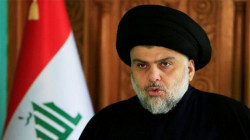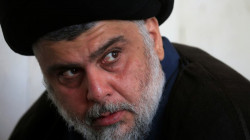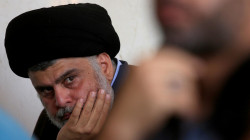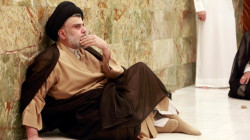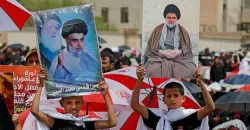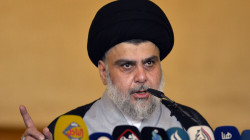Foreign Affairs: the Revenge of al-Sadr.. Why Iran Could Be the Real Loser in Iraq’s Intra-Shiite Struggle?
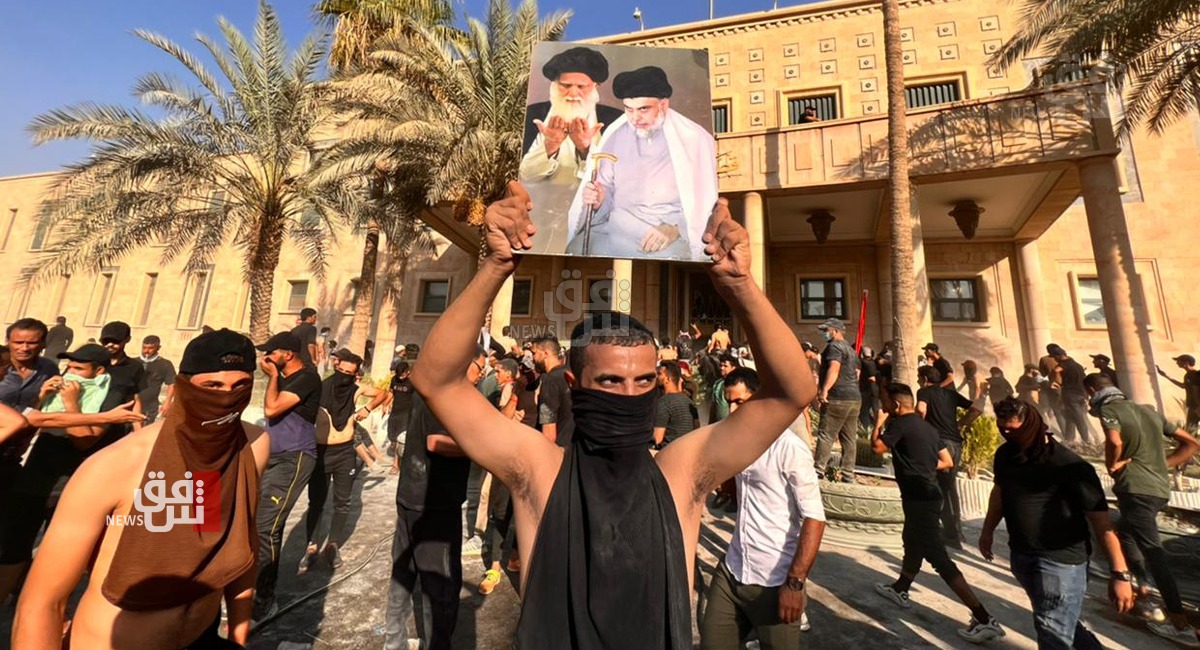
On August 29, the Iraqi Shiite cleric Muqtada al-Sadr announced that he would withdraw from politics after months of failed attempts to form a new government. Thousands of supporters of the nationalist leader, who has emerged as a staunch opponent of Iranian-backed militias in Iraq, surged into the streets in anger, clashing with Iraqi security forces, breaching concrete barriers around Baghdad’s Green Zone, and storming the seat of government. After dozens of people were killed, Sadr went on television and instructed his supporters to go home, easing—for the moment, at least—a political crisis that has paralyzed Iraq’s caretaker government for months.
Iraq’s political system has been deadlocked since last October, when the country held its fifth parliamentary elections since the U.S.-led invasion in 2003. Sadr’s alliance won the most seats, but neither his bloc nor any other has managed to form a government. The conflict has played out not between rival sects or ethnic groups but within Iraq’s largest community, the Shiites, who are divided over their country’s relationship with Iran. The Sadrists, whose leader was once Tehran’s close ally, argue that Baghdad should distance itself from all foreign powers including Iran; other factions remain more closely aligned with Iraq’s powerful neighbor.
Although Sadr claims to have retired from politics, he is likely working to leverage this latest cycle of brinkmanship and street protests to gain the upper hand over his rivals. Sadr has made similar pronouncements in the past but has never truly withdrawn from the political realm. He seeks to establish himself as Iraq’s undisputed Shiite power broker and to dominate the sectarian power-sharing system that has been in place since shortly after the United States toppled Iraqi President Saddam Hussein’s Baathist regime. Although Sadr has couched his power play as a crusade against a corrupt political class that is beholden to Iran and other foreign powers, his gambit poses another risk to the fragile Iraqi state: Baghdad could be overpowered not by Iranian-backed political factions but by a Shiite Islamist cleric who once commanded one of Iraq’s most feared militias. That may seem like a long shot in the wake of Sadr’s failed street protests. But as the heir to one of the Shiite world’s most renowned clerical families, Sadr has proved remarkably adept at parlaying his religious pedigree into hard power. His opponents should think twice before counting him out. GOD AND COUNTRY
Sadr embodies a rebellious and nationalist brand of Shiism in Iraq. Grand Ayatollah Ali al-Sistani, the country’s most revered cleric, and other senior Shiite theologians eschew direct political involvement. In so doing, they have created a power vacuum within the Shiite community—one that Sadr has worked for two decades to fill.
A brash, little-known cleric who first emerged in 2003 in Najaf, Iraq’s center of Shiite theology, Sadr went on to become one of Washington’s most vexing enemies in Iraq. His militia, the Mahdi Army, fought against U.S. forces for years, killing hundreds of American soldiers. From the beginning, he sought to combine political power with religious authority, despite having limited theological credentials and an apparent disdain for the years of study under senior clerics required to attain the title of ayatollah. Without such qualifications, Sadr could not issue religious rulings or serve as a marja, an example for the Shiite faithful to emulate. But as the only surviving son of Grand Ayatollah Muhammad Sadiq al-Sadr, a leading Shiite scholar who challenged the Baathist regime until he was assassinated in 1999, the younger Sadr was able to follow in his father’s footsteps as the political leader of the Sadrist movement.
Since the U.S. invasion, Sadr has been the Iraqi leader most adept at navigating the intersection of politics and religious authority, a fact that could explain his latest maneuver. Iraq’s political crisis has lasted nearly 11 months. Yet Sadr did not initiate bloody street protests until he confronted a threat beyond politics: one to his religious legitimacy. A day before Sadr declared his retirement from politics, Grand Ayatollah Kadhim al-Haeri, an aging Iraqi cleric based in Iran who had served as a spiritual guide to many members of the Sadrist movement, announced that he was stepping down due to poor health. But instead of calling on his followers to transfer their allegiance to another Iraqi Shiite cleric—one who might be sympathetic to Sadr—Haeri advised them to follow Iran’s supreme leader, Ayatollah Ali Khamenei. It was an unusual move, since most grand ayatollahs instruct their followers to emulate other senior clerics only after the clerics have died. And the pronouncements of grand ayatollahs are typically filled with religious invocations and platitudes, whereas Haeri’s was implicitly critical of Sadr. Without naming him, Haeri said that Sadr risked tearing apart Iraq and its Shiite majority. He also suggested that Sadr lacked the necessary qualifications for religious leadership and challenged the younger cleric’s status as heir to his family’s legacy. In his own speech calling for an end to the recent demonstrations, Sadr claimed that Iranian officials and his Iranian-backed Shiite rivals were behind Haeri’s criticism.
In 2020, nearly three-quarters of Iraq’s budget went to paying salaries and pensions.
This backstabbing reflects a growing power vacuum within Iraq’s Shiite community, one that has opened up as Iran’s influence in the country has waned. For years, Iran’s supreme leader sent General Qasem Soleimani, the head of the Islamic Revolutionary Guard Corps’s foreign operations unit, to Iraq to keep Tehran’s Shiite supporters in line. But after the United States killed Soleimani in a drone strike in 2020, Iran lost an important lever of power over its Iraqi allies. Soleimani’s successor has been less successful at keeping Iraq’s Shiite factions—especially the Sadrists—from challenging Tehran. Although Sadr has portrayed himself as an Iraqi nationalist who seeks to stamp out foreign meddling, he lived in Qom, Iran’s center of Shiite scholarship, during some periods of Iraq’s civil war and was once allied with Tehran. But Iran’s leaders grew exasperated with Sadr’s unwillingness to work with their Iraqi allies, and they likely tried to increase the pressure on Sadr by convincing Haeri to question his religious legitimacy.
More political machinations are likely. Sistani, the most powerful cleric in Iraq, is in his nineties and believed to be in poor health. His statements are becoming rare. Shiite leaders in Iraq and Iran are preparing for his death and a potential rupture if more than one successor emerges from Najaf. Despite his limited credentials, Sadr is positioning himself for the post-Sistani period, hoping to play a role in choosing a successor or consolidating support in case there are competing heirs. Sadr’s drive for greater political influence in Iraq is part of this campaign: with more sway over the government in Baghdad and a greater share of its spoils, Sadr will be able to exert even more influence over Iraq’s religious establishment.
TO THE VICTOR, THE SPOILS
Iraq’s current political crisis stems from Sadr’s failure to form a government after winning the largest share of seats in the country’s 329-seat parliament. Historically, Iraq’s Shiite factions have coalesced after elections—often with help from Iran—to form a large bloc and distribute top government ministries, eventually bringing in the Sunni and the Kurdish parties. But with the support of just 73 lawmakers, Sadr tried to form a coalition government with the Sunni and the Kurdish factions and freeze out his Shiite opponents. Had he succeeded, his supporters would have claimed that Sadr upended the highly unpopular ethno-sectarian power-sharing system—known as muhasasa—that the United States and its Iraqi allies imposed after the invasion. But Sadr is actually trying to further consolidate that system under his control, not destroy it.
Sadr is particularly loath to ally with Nouri al-Maliki, whose bloc won 33 seats in last year’s elections, the second highest among Shiite factions after the Sadrists. Maliki, who served as prime minister from 2006 to 2014, was responsible for many of the disastrous policies that alienated the Sunnis, weakened the Iraqi security forces, and allowed the Islamic State (or ISIS) to capture nearly one-third of the country. But Sadr’s rivalry with the former prime minister isn’t just about Maliki’s record; it is personal: in 2008, Maliki, with support from U.S. officials, ordered Iraqi security forces to fight Sadr’s militia in southern Iraq. The cleric never forgave Maliki for damaging his movement at the height of Iraq’s civil war.
The muhasasa system of doling out the spoils was modeled on Lebanon’s dysfunctional arrangement, which sought to guarantee the rights of religious minorities but ended up creating endemic corruption, political instability, and economic collapse. Under Iraq’s scheme, the prime minister must be a Shiite, the speaker of parliament a Sunni, and the (largely ceremonial) president a Kurd. The system extends through most layers of government and the civil service. After each parliamentary election, sectarian parties divide up the ministries, causing long delays in cabinet formation, as they jockey for the offices with the most lucrative government contracts and other sources of patronage. As a result, the number of public workers in Iraq has tripled since 2004, and the government now pays 400 percent more in salaries than it did then. In 2020, nearly three-quarters of Iraq’s budget went to paying salaries and pensions for the bloated public sector.
Most Iraqi parties and factions that came to power after 2003 benefit from this system of sharing the spoils and are reluctant to abandon it, even as they drive their oil-rich country toward financial ruin and fail to provide electricity, clean water, health care, and other basic services to the Iraqi people. Sadr’s movement and its allies also gain from the current system, despite the cleric’s best efforts to portray himself as a reformer. His power stems from a combination of religious and populist appeal and the fruits of state patronage. Like other members of the Iraqi elite, Sadr has maneuvered his aides and supporters into senior government positions. Dramatic reform would not serve his interests, which is why he doesn’t seek to abolish the power-sharing scheme but rather to position himself atop it as kingmaker.
DOWN BUT NOT OUT
In trying to solidify his control over the system after last year’s elections, Sadr may have overplayed his hand. After months of negotiations with the Sunni and the Kurdish parties, the Sadrists cobbled together a parliamentary majority that would have been able to elect a president, who in turn could have nominated a prime minister to form a cabinet. The parliament would then have had to approve the cabinet before the ministers took their posts. But in February, Iraq’s Supreme Court, whose judges were appointed by pro-Iranian Shiite factions, ruled that the legislature must convene with at least a two-thirds majority to elect a president, as opposed to the simple majority required in previous years. Shiite factions that oppose Sadr boycotted the parliamentary session, denying him the supermajority needed to hold a vote.
Sadr tried to peel away some rival Shiite factions by offering them control of various ministries, but he refused to negotiate with Maliki and failed to gain a supermajority. In June, Sadr’s candidate for prime minister, Jaafar al-Sadr, the cleric’s cousin and the current Iraqi ambassador to the United Kingdom, withdrew his candidacy. Sadr then ordered his 73 lawmakers to resign from parliament en masse, hoping to force his rivals to lift their boycott and reconvene the chamber.
Sadr may have overplayed his hand.
But Sadr’s gambit backfired, as his Shiite opponents quickly moved to fill the seats, which by law go to the runner-up in each district when the winner resigns. With his rivals commanding a new parliamentary majority, Sadr feared he could be excluded from a government that could stay in power for three years. In July, he responded by urging his followers to breach the Green Zone and blockade parliament with a sit-in protest to prevent a vote on a new president and cabinet. Thousands of Sadrists packed a tent encampment, demanding the dissolution of the current parliament and early elections.
The Sadrist siege of parliament ended on August 30, after Sadr ordered his supporters to leave the streets to avoid more violence. In reacting to Haeri’s religious challenge, Sadr may have miscalculated by instigating violent protests without a clear plan to break Iraq’s political deadlock. But Sadr has a way of recovering from political setbacks and emerging with even greater power. Despite his reputation as a tempestuous and erratic leader, Sadr has played a long game, outlasting the U.S. occupation and some aging members of the Najaf religious hierarchy. He built a formidable social and political movement that can deliver votes and take advantage of Iraq’s corrupt patronage system. For years, Sadr showed greater political skill than the United States and his Iraqi rivals gave him credit for—and he consistently outmaneuvered them.
So far, Sadr has fallen short in his campaign to contain Iran’s influence, weaken other Shiite factions in Iraq, and exert control over the country’s power-sharing arrangement. The question now is whether Sadr’s opponents will try to exclude him from the government entirely—and risk unleashing a new cycle of bloodshed—or attempt to reach a compromise and thereby delay his grand ambition to become Iraq’s most powerful Shiite leader.
(By Mohammad Bazzi for the Foreign Affairs)
